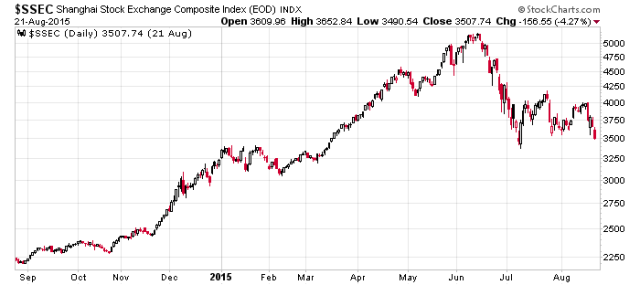This is a rambling post.
Downward volatility is the best friend of an investor that has plenty of cash.
You will also see these punctuated by magnificent rallies upwards which will get everybody that wanted to get in thinking they should have gotten in, until the floor drops from them again which explains today.
By virtue of having well over half cash and watching the carnage, I’m still not finding anything in fire-sale range except for items in the oil and gas industry which are having their own issues for rather obvious reasons. Examples: Penn West (TSX: PWT) and Pengrowth (TSX: PGF) simultaneously made announcements scrapping and cutting the dividends, respectively, and announcing capital expenditure reductions and their equity both tanked over 10% today. Crescent Point (TSX: CPG) had a fairly good “V” bounce on their chart, but until oil companies as an aggregate start going into bankruptcy and disappearing, it is still going to be a brutal sector to extract investor value from.
I just imagine if I was one of the big 5 banks in Canada and having a half billion line of credit that is fully drawn out in one of these companies. Although you’re secured, you don’t envy the train wreck you have to inherit if your creditors pull the plug.
The REIT sector appears to be relatively stable. Looking at charts of the top 10 majors by market capitalization, you don’t see a recession in those charts. If there was a true downturn you’d expect to see depreciation in the major income trusts. I don’t see it, at least not yet.
Even when I exhaustively explore all the Canadian debentures that are publicly traded, I do not see anything that is compelling. The last debt investment which was glaringly undervalued was Pinetree Capital (TSX: PNP.DB) – but this was in February. They recently executed on another debt redemption which puts them on course to (barely) fulfilling their debt covenants provided they can squeeze more blood from their rock of a portfolio. I wouldn’t invest any further in them since most of what they have left is junk assets (Level 3 assets which will be very difficult to liquidate). One of those investments is a senior secured $3 million investment (12% coupon!) in notes of Keek (TSXV: KEK) which somehow managed to raise equity financing very recently.
The preferred share market has interesting elements to them as well. Although I’m looking for capital appreciation and not yield, it is odd how there are some issuers that are trading at compellingly low valuations – even when factoring in significant dividend cuts due to rate resets (linked to 5-year Government of Canada treasury bonds yielding 0.77%!). I wonder if Canada’s bond market will go negative yield like some countries in Europe have – if so, it means those rate reset preferred shares will have even further to decline!


